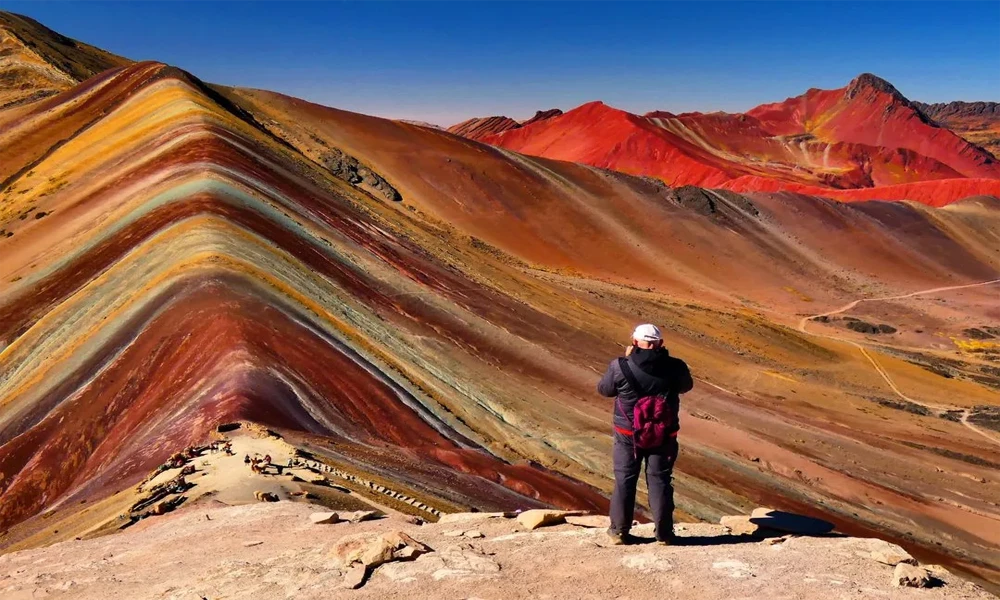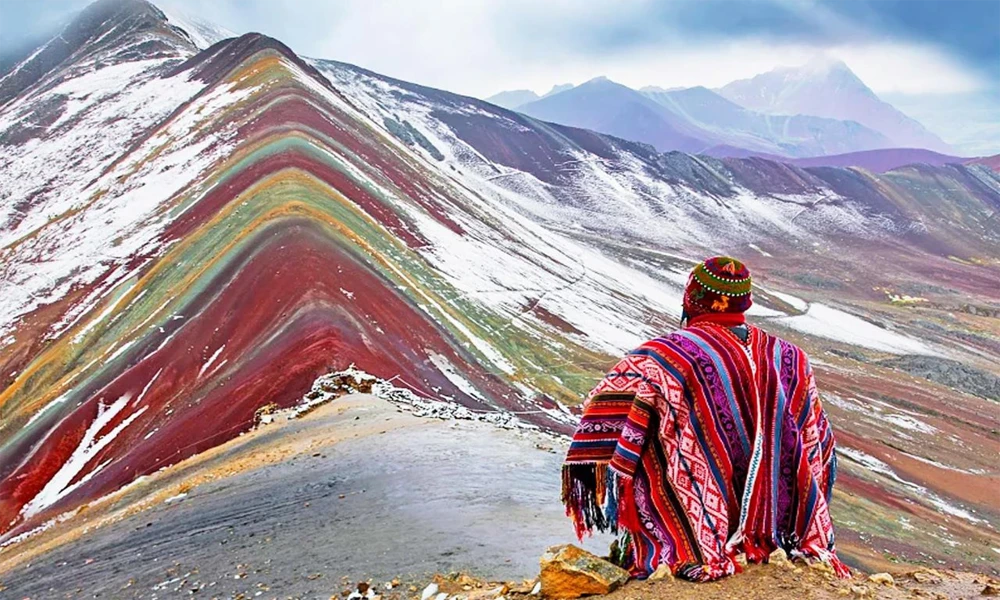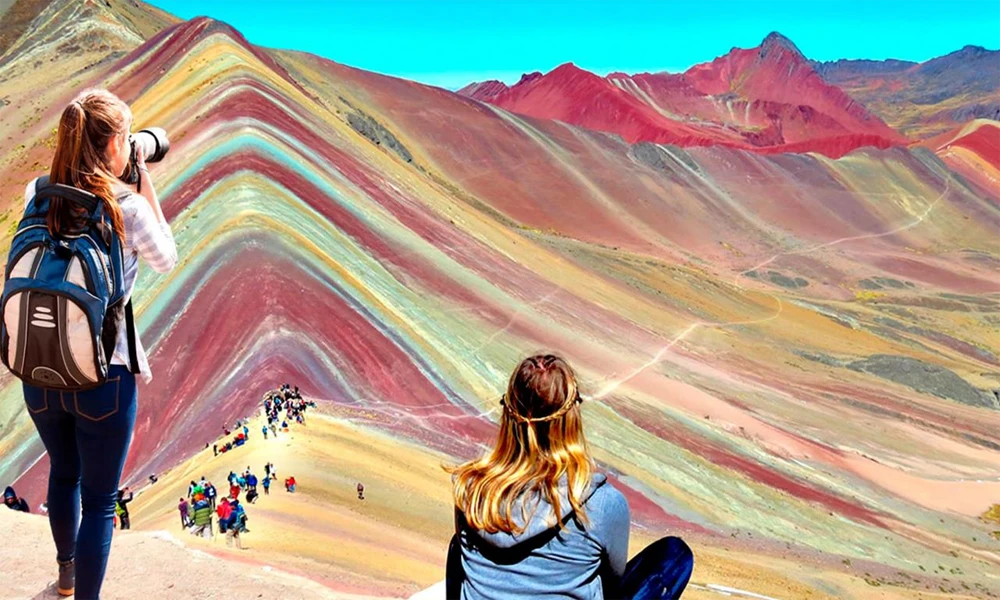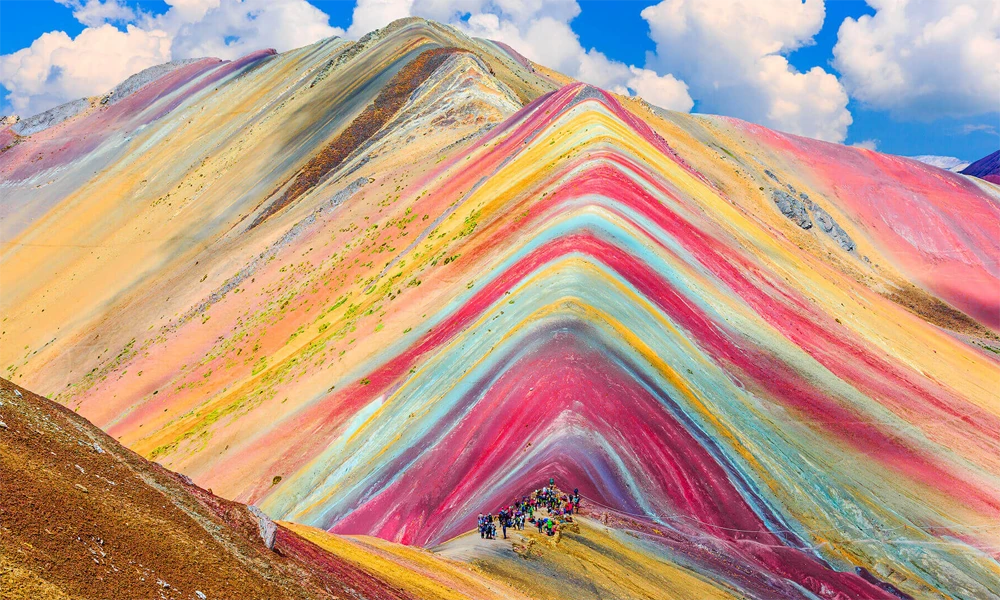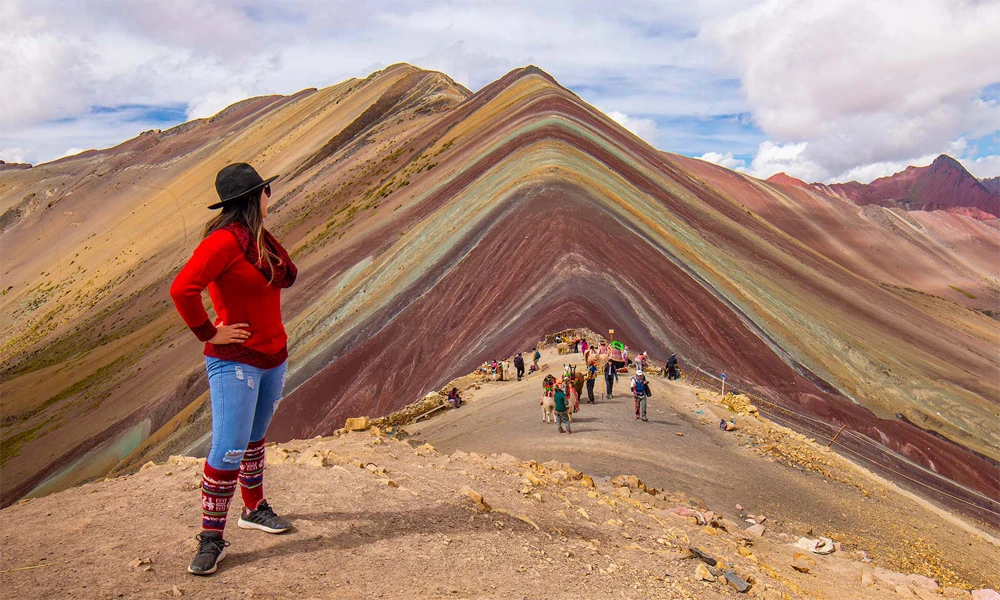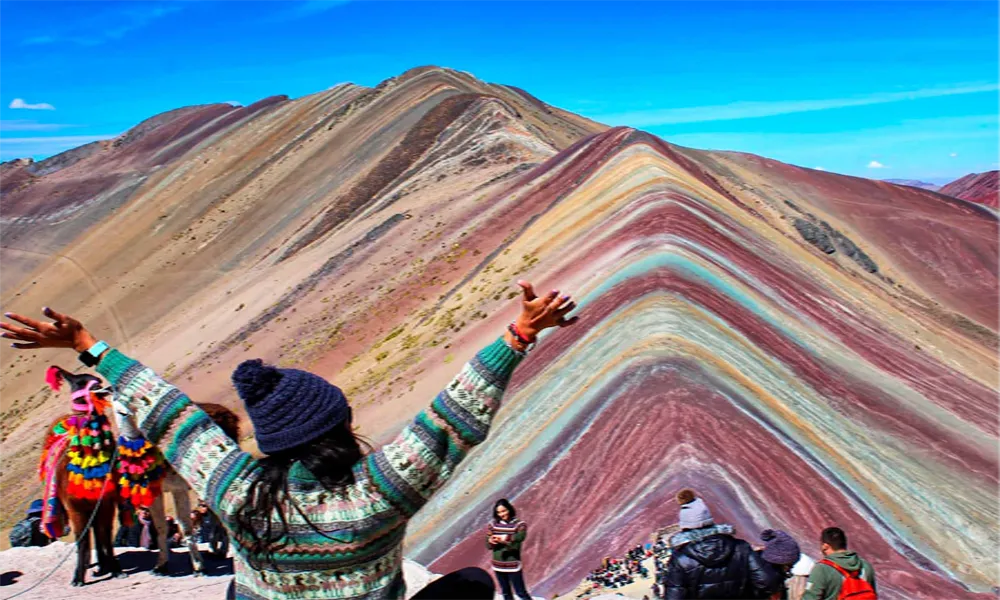🏔️ Quelccaya Glacier Tour 2 Days / 1 Night | Expedition to the World’s Largest Tropical Ice Plate
Description
The Quelccaya Glacier is the largest tropical glacier in the world, located in the Vilcanota mountain range in southern Peru, about 100 kilometers southeast of Cusco. This glacier lies at altitudes ranging between 5,500 and 6,200 meters above sea level and covers an area of approximately 44 km². It is a unique location due to its location in a tropical zone, making it an exceptional geographical phenomenon, as most glaciers in the world are found at higher latitudes, in polar regions.
The Quelccaya Glacier is an enormous mass of ice, with a layer up to 200 meters thick in some areas. Its importance is crucial from both a scientific and ecological perspective, as it acts as a water reservoir for the region’s communities and feeds several rivers that supply nearby towns.
Geographic and Natural Features:
- Location: The glacier is located in Vilcanota National Park, one of the most remote and least explored areas of the Peruvian Andes.
- Access: Despite its remoteness, the Quelccaya Glacier has begun to receive tourist attention due to its uniqueness. You can reach the area of Pacchanta, a small community that serves as the starting point for hikes to the base of the glacier.
- Lagoons: Around the glacier are several crystal-clear lagoons, such as Laguna Sibinacocha, which is one of the area’s main attractions. These lagoons reflect the imposing mountains and the glacier, creating a breathtaking landscape.
Cultural and Ecological Significance:
- Andean Culture: The people who live near the Quelccaya Glacier, such as those of Pacchanta, have a strong connection with nature and their ancestral traditions. The glacier and the surrounding mountains are considered sacred sites in Andean worldviews, and their preservation is crucial for local communities.
- Climate Change: Like many other glaciers around the world, Quelccaya Glacier is experiencing retreat due to climate change. This has attracted the attention of scientists and ecologists, who are studying its effects on the local climate, water sources, and ecosystems.
Scientific Significance:
- Climate Research: The Quelccaya Glacier has been the subject of extensive climate change studies, as its ice sheets contain records of thousands of years of climate history, helping scientists understand how the climate has changed in the past and predict how it might evolve in the future.
Itinerary
📍 Itinerary
🏞️ Day 1: Cusco – Pacchanta – Sibinacocha Lagoon – Base Camp in Quelccaya
The expedition begins with a meeting with the guide team in Cusco. Aboard a private vehicle, we begin the journey south through the Sacred Valley, following the Interoceanic Highway toward the province of Quispicanchi, passing through high Andean towns such as Urcos, Ccatcca, Ocongate, and Tinki.
As we ascend, the landscape transforms: we leave the fertile valleys behind and enter the open puna, with high plateaus, Andean grasslands, rock formations, and our first views of the snow-capped Apus mountains, such as the majestic Ausangate.
Our first significant stop is in Pacchanta, a community famous for its natural hot springs and its proximity to Ausangate. Here we take the opportunity to rest, adjust a little more to the altitude, and enjoy the breathtaking views of the landscape.
From Pacchanta, we continue by 4×4 along dirt roads that cross little-explored areas, passing by highland lagoons, wetlands, and remote ravines, until we reach the impressive Sibinacocha Lagoon, a deep blue body of water that extends in the middle of the Vilcanota Mountain Range. This glacial lagoon, surrounded by snow-capped peaks and unique geological formations, offers absolutely majestic views and is considered one of the most important sources of freshwater in the region.
After a short panoramic trek around Sibinacocha for acclimatization and photography, we continue to the foothills of the Quelccaya Glacier, where we set up our base camp, located between 4,900 and 5,000 meters above sea level.
The surroundings are completely wild: the view opens toward the frozen horizon, where glacial tongues, ancient ice formations, and melting lagoons can be seen. The air is cold, pure, and dry. Camp is set up with thermal tents, insulated mats, and a sheltered dining area. A hot dinner is served under a clear, star-filled sky, one of the clearest in Peru.
🔎 Highlight of the day: watching the sunset over the Quelccaya ice mass, surrounded by absolute silence and unspoiled nature. Ideal for night photography and deep contemplation.
❄️ Day 2: Quelccaya Glacier – Trekking to the glacier edge – Return to Cusco
At dawn, with the sun barely peeking behind the snow-capped peaks, we prepare for the most impressive day of the tour. After breakfast at camp, we dressed in thermal clothing and light mountaineering gear to begin a hike to the base of the Quelccaya Glacier, the world’s largest glacier in the tropical zone.
The hike takes place over a mixture of rock, Andean moss, and frozen ground. As we advance, the surroundings become more surreal: fragments of broken ice, small streams of glacial water, moraines, and walls of white and blue ice begin to appear.
The goal of the hike is to reach the front edge of the glacier, a colossal wall of ice that forms a kind of natural barrier several meters high. Here, the guide explains the scientific importance of the Quelccaya Glacier, its role in water regulation in the region, and how it has been the subject of glaciological and climate change studies for more than three decades.
At this point:
- You can observe the texture and layers of the ancient ice.
- You can see lagoons formed by melting ice, surrounded by perpetual snow.
- You can even hear natural cracks and fractures within the glacier, which bear witness to its slow and steady movement.
After a break to contemplate this unique natural spectacle, we take the same route back to base camp, where lunch awaits us.
After a rest, we break camp and begin the return journey to Cusco. Along the way, we repeat part of the previous day’s scenic route, with new opportunities to take photos of lagoons, Andean birds, llamas, alpacas, and vicuñas in their natural state.
🔎 Highlight of the day: direct contact with the active glacier, a hike on one of the last tropical ice masses in the world, steeped in spiritual, geological, and ecological value.
📍 Key Itinerary Highlights
- The tour travels through remote areas with little human presence, ensuring a direct connection with nature.
- The Quelccaya Glacier is located in a rarely visited and difficult-to-access region: it can only be reached by 4×4 vehicles and specialized operators.
- This is a self-sufficient itinerary, requiring good physical fitness, prior acclimatization, and a willingness to camp in extreme conditions.
- Altitudes exceeding 5,000 meters above sea level are covered, making the experience challenging and deeply transformative.
Note: The Quelccaya Glacier 2-Day/1-Night Tour requires a minimum of two people. Secure your Andean adventure as a group!
Includes
✅ What does the Tour include?
- 🚐 Private tourist transportation Cusco – Quelccaya – Cusco
Exclusive 4×4 vehicle for the group, with an experienced driver and scheduled stops at key points along the route. - 🧑🏫 Professional bilingual high-mountain guide (Spanish – English)
Specialist in high-altitude ecosystems, glaciers, mountain safety, and local geography. Accompaniment throughout the tour. - 🏕️ Full camp in the glacier area (1 night)
Includes heavy-duty thermal tents, insulated sleeping mats, sleeping bags suitable for sub-zero temperatures, a dining tent, and a kitchen tent. - 🍽️ All meals
Breakfast, lunch, and dinner (1 full day), plus natural snacks and hot drinks. Special dietary options are accommodated if requested in advance. - Purified drinking water throughout the trek
Boiled and filtered water provided at camp to fill personal bottles or thermoses. - Packhorse for logistics
Carrying camping gear and large backpacks during the trek. Carry only the essentials in your personal backpack. - Entry and access permits to the glacier area
Processing of community and/or territorial permits to travel in the Quelccaya area. - Guided hike to the edge of the Quelccaya Glacier
High-altitude trekking with assistance and interpretive stops on glaciology, geography, and the environment. - First aid kit + emergency oxygen
The guide carries portable oxygen, basic medications, and knowledge of altitude first aid. - 📸 Panoramic photography stops
At strategic points such as Sibinacocha Lagoon, wetlands, viewpoints, ice formations, and snow-capped mountains.
Not Included
❌ What’s not included?
- 🧥 Warm clothing and personal mountain equipment
Passengers must bring their own thermal clothing, gloves, hat, waterproof boots, walking sticks, headlamp, personal backpack, etc. - 🩺 Medical, accident, or rescue insurance
No insurance is included. It is recommended to travel with international coverage and check with your insurance provider if it covers activities at altitude. - 🐎 Personal horse for trekking (optional)
If the passenger is unable to walk independently, a service horse can be rented from the local community (at an additional cost and payable directly). - 💸 Tips for the guide, cook, or muleteer
Not mandatory, but appreciated by the local team that makes this expedition possible. - 📷 Camera, drone, or specialized equipment
If you wish to record professional content or use drones, you must bring your own equipment and check for permits. - 🥤 Additional drinks (energy drinks, isotonic drinks, alcoholic drinks, etc.)
Only water and hot drinks (mate, infusions) are included. Any extras must be brought by the passenger. - 🪪 Personal expenses not specified in the itinerary
Such as extra snacks, artisanal products, or meals outside the program.
Recommendations
🎒 Recommendations
These recommendations are designed to help you enjoy this expedition to the fullest, keeping you safe, comfortable, and prepared for the demands of the terrain:
🧥 Dress in layers for extreme weather
Bring thermal underwear, a fleece, a waterproof windbreaker, and a down jacket or mountain coat. The weather can be frigid, especially at night.
👟 Appropriate trekking footwear
Wear waterproof boots with good grip and ankle support. Urban footwear and regular sneakers are not recommended.
🧤 Hat, thick gloves, and a fleece scarf or neck warmer
These accessories are essential to prevent body heat loss, especially at dawn or at the glacier edge.
🎒 Bring a small backpack for hiking and a large backpack for camp.
Include water, snacks, a camera, a flashlight, and an extra layer in your small backpack. Your large backpack will be transported on horseback.
💧 Stay well hydrated
Altitude can cause rapid dehydration. Bring your reusable bottle or camelback system and drink regularly.
🧴 Sunscreen, lip balm, and UV sunglasses
The sun’s reflection off snow and ice is very intense. Protect your skin, lips, and eyes.
🍫 Bring extra energy snacks
Nuts, dark chocolate, cereal bars, or Coca-Cola candies are perfect for maintaining energy during the trek.
🔦 Don’t forget a headlamp and extra battery.
The area has no electricity. Your flashlight will be useful at camp at night.
🔋 Bring a power bank for your cell phone or camera
The cold quickly drains batteries, and you won’t have anywhere to recharge during the expedition.
🪪 Acclimatize before the tour
It’s essential to spend at least two days in Cusco before the tour to avoid altitude sickness during the trip.
FAQs
❓ Frequently Asked Questions (FAQs)
❄️ How cold is it in the glacier area?
At night, temperatures can drop to -10°C, especially during the dry season. During the day, it can reach 10°C in the sun, but the icy wind is constant. Thermal clothing and appropriate equipment are essential.
🥾 Is trekking experience necessary?
Professional experience is not required, but good physical condition and altitude acclimatization are required. The trek to the glacier takes place at around 5,000 m above sea level. and can be challenging for people unfamiliar with high-altitude hiking.
🐎 Can I use a horse if I don’t want to walk?
Yes. You can rent a personal assistance horse, contracted directly with the local muleteers. This option has an additional cost and is subject to availability.
🏕️ Where will I sleep during the expedition?
Sleep will be provided at an open-air base camp, in high-altitude thermal tents. All necessary equipment is provided: sleeping bag, sleeping mat, and dining tent. There are no accommodations or tourist infrastructure in the area.
🌐 Is there telephone or internet service?
No. The entire Quelccaya Glacier area is out of service. It is recommended that you inform family members in advance that you will be isolated for at least 36 hours.
🧪 What is the importance of the Quelccaya Glacier?
It is the largest tropical glacier in the world and a vital source of research on climate change, containing climate records dating back more than a thousand years. It also supplies water to communities and lagoons in the southern Andes.
🩺 What happens if I get altitude sickness?
The guide carries portable oxygen and a basic first-aid kit. If you experience mild symptoms, the pace is adjusted and monitored. In severe cases, the early descent and return protocol is activated. That’s why it’s essential to be acclimatized and have medical insurance.


